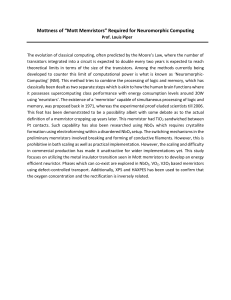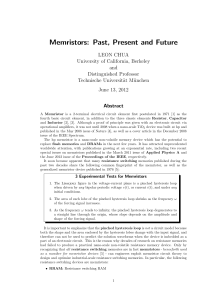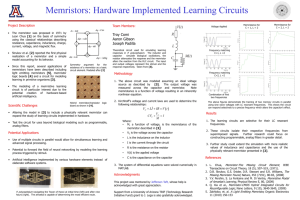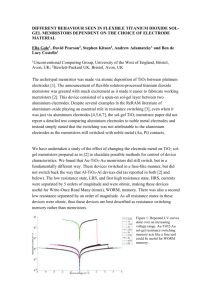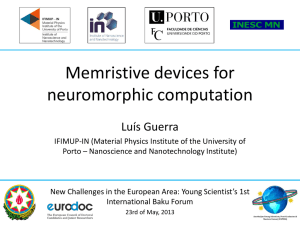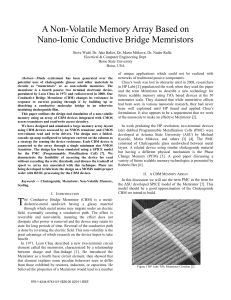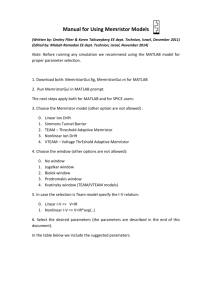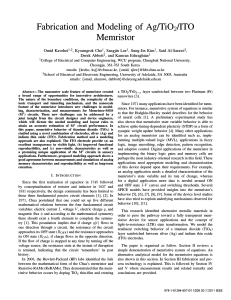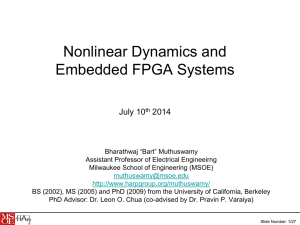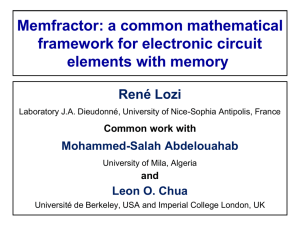Memristor * A nonvolatile storage solution
advertisement
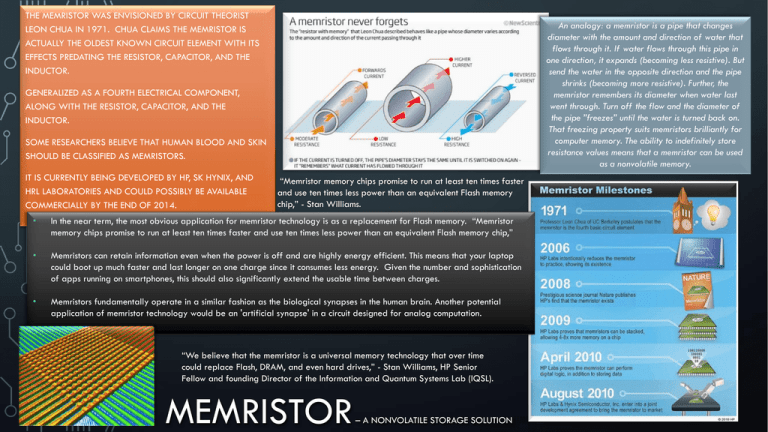
THE MEMRISTOR WAS ENVISIONED BY CIRCUIT THEORIST LEON CHUA IN 1971. CHUA CLAIMS THE MEMRISTOR IS ACTUALLY THE OLDEST KNOWN CIRCUIT ELEMENT WITH ITS EFFECTS PREDATING THE RESISTOR, CAPACITOR, AND THE INDUCTOR. An analogy: a memristor is a pipe that changes diameter with the amount and direction of water that flows through it. If water flows through this pipe in one direction, it expands (becoming less resistive). But send the water in the opposite direction and the pipe shrinks (becoming more resistive). Further, the memristor remembers its diameter when water last went through. Turn off the flow and the diameter of the pipe ”freezes” until the water is turned back on. That freezing property suits memristors brilliantly for computer memory. The ability to indefinitely store resistance values means that a memristor can be used as a nonvolatile memory. GENERALIZED AS A FOURTH ELECTRICAL COMPONENT, ALONG WITH THE RESISTOR, CAPACITOR, AND THE INDUCTOR. SOME RESEARCHERS BELIEVE THAT HUMAN BLOOD AND SKIN SHOULD BE CLASSIFIED AS MEMRISTORS. IT IS CURRENTLY BEING DEVELOPED BY HP, SK HYNIX, AND HRL LABORATORIES AND COULD POSSIBLY BE AVAILABLE COMMERCIALLY BY THE END OF 2014. “Memristor memory chips promise to run at least ten times faster and use ten times less power than an equivalent Flash memory chip,” - Stan Williams. • In the near term, the most obvious application for memristor technology is as a replacement for Flash memory. “Memristor memory chips promise to run at least ten times faster and use ten times less power than an equivalent Flash memory chip,” • Memristors can retain information even when the power is off and are highly energy efficient. This means that your laptop could boot up much faster and last longer on one charge since it consumes less energy. Given the number and sophistication of apps running on smartphones, this should also significantly extend the usable time between charges. • Memristors fundamentally operate in a similar fashion as the biological synapses in the human brain. Another potential application of memristor technology would be an 'artificial synapse' in a circuit designed for analog computation. “We believe that the memristor is a universal memory technology that over time could replace Flash, DRAM, and even hard drives,” - Stan Williams, HP Senior Fellow and founding Director of the Information and Quantum Systems Lab (IQSL). MEMRISTOR – A NONVOLATILE STORAGE SOLUTION • http://againsttheodds.hubpages.com/hub/Memri stor-Memory-Circuits • http://www.wired.com/wiredenterprise/2012/0 7/hp-memristors/ • http://www.xbitlabs.com/news/storage/display /20120927125227_HP_and_Hynix_Cancel_Pla ns_to_Commercialize_Memristor_Based_Memory _in_2013.html • http://highscalability.com/blog/2010/5/5/how -will-memristors-change-everything.html • http://h30507.www3.hp.com/t5/DataCentral/HP-and-Hynix-Bringing-the-memristorto-market-in-next-generation/ba-p/82218
